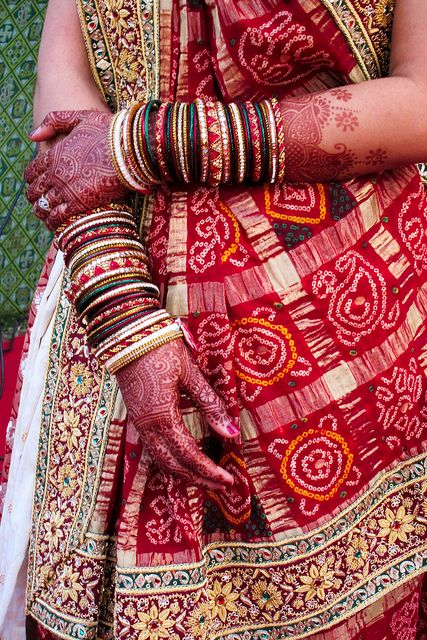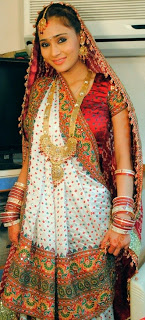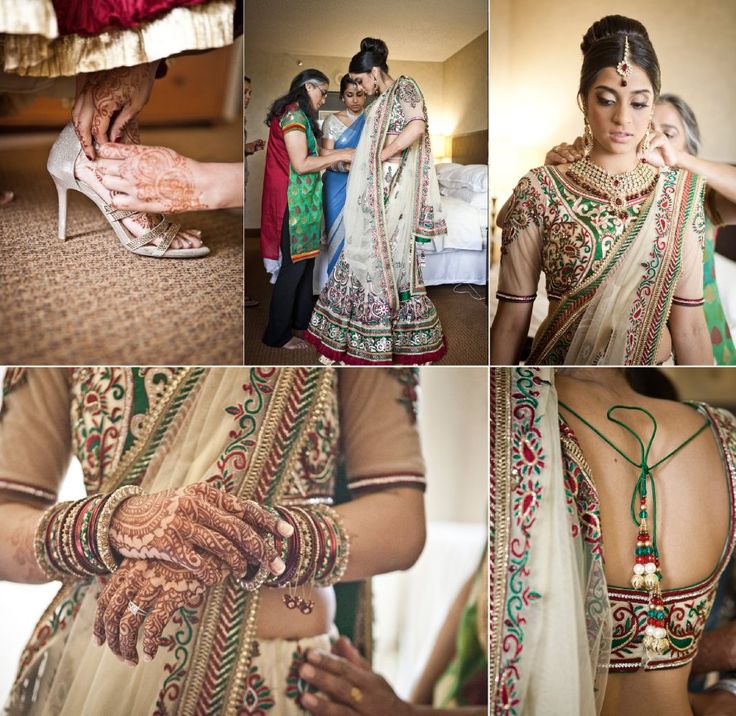
Panetar: A Bridal Saree from Gujarat
The Panetar is a kind of traditional ceremonial saree given to a bride on her wedding day by her family. This saree is characterized by its white body, set off by a bright red border and pallav or pallu. Traditionally it was made of the finest silk although over the years, the textiles used for the Panetar have changed with changing trends. The gifting of the Panetar is practiced only in certain parts of Gujarat like the districts of Ahmedabad, Jamnagar and Kutch along with Rajkot and Surat. The gifting of the Panetar is integral to the marriage proceedings in these areas and is usually accompanied by the gifting of another type of saree known as the Gharchola, which is from the groom’s family.
Background and Evolution
Panetar is essentially the Gujarati name for the bridal saree that is gifted to the bride by her maternal uncle. Initially, this bridal saree showcased green in its border and pallav. This tradition evolved to incorporate the colors saffron and yellow around the time of the independence of India. Post-independence, the color scheme underwent a change once more and this time ’round, the border and pallav were dyed either in red or maroon, both of which are joyous colors.
Historically, the bride would wear the Panetar during the first half of the wedding ceremony and would change into the Gharchola for the second half, thus symbolizing her transition from one family to the other. Today, however, the common practice is to wear a Gharchola dupatta over the head and the shoulders while showcasing a Panetar bridal saree on the body.
Another facet in the evolution of the Panetar revolves around the grandeur of the saree. Traditionally, the Panetar is supposed to be made of silk and the Gharchola was supposed to be made from cotton. However, since silk by itself is a more luxurious and lustrous fabric, gifting a heavily decorated silk Panetar was seen as an affront to the groom’s family. As a result, the bride’s family would buy the plainest of Panetar sarees so that the Gharchola would look grander in comparison. This practice has now gone out of use and both, the Panetar and the Gharchola, can be as opulent as the other and made of whatever fabric the bride chooses along with members of both families.
The Making
The Panetar saree along with the Gharchola is made by the Chhipa and Khatri communities from Gujarat. While the fabric for the Panetar may be machine woven, the embroidery and embellishments on the saree are all done by hand. This type of saree resembles the Bengali Tant Sarees in the color scheme, but is differentiated from it in its textile and the extensive hand embroidery done on it.
Features of the Panetar
The Panetar is made of white Gajji silk and has thin linear stripes or thin checks in gold zari. The border and the pallav are either red or maroon in color and were traditionally embellished with bandhani or tie and dye. The motifs were abstract yet simple with dots in either white or yellow. This was the basic Panetar saree which could also be embellished with sequins and stones in techniques indigenous to the state of Gujarat.
Present Day Scenario and Global Influence
The traditional characteristics of the Panetar saree have now taken on a more modern flavor so as to appeal to modern, urban sensibilities. The Panetar saree is now woven in either silk blends or other lighter flowing fabrics such as crepe, tissue, georgette, chiffon and organza.
Almost all modern Panetar sarees feature exquisite resham embroidery, zardozi work, sequin work, cutdana work and/or stone work including kundan on fabric. The motifs created from these raw materials can either be traditional or modern and abstract.
Another change in the Panetar is the resurrection of the color green, in the ensemble. However, this element is added to the blouse and not the saree itself.
Innovations
Originally a saree, designers have recently created a range of Panetar lehenga cholis. The lehenga is white with a red border and is usually worn with a red blouse. This ensemble is completed with two dupattas, one white and red and the other the Gharchola.
Wearing the Attire
The Panetar saree is worn like all other Gujarati sarees i.e. the pallu is taken from back to front over the right shoulder. Since it is a bridal garment, the jewelry worn with it is ornate and designed especially for the wedding day. Complete setsof jewelry including earrings, maang tikka, naths and necklaces of Kundan, Polki or Meenakari can be worn with it. Bridal bangles or churas are characteristic of Hindu brides all over the country.
Maintenance
The Panetar should be carefully maintained keeping in mind its delicate fabric and intricate detailing. Washing in the machine should be avoided. Delicate suds while hand washing the saree or lehenga choli is preferred. It should be wrapped in a muslin cloth along with naphthalene balls to prevent damage by insects.
Facts and Trivia
- Nowadays the body of the saree is also as heavily embroidered as the pallav and border are.
- The red in the Panetar is a recent change although red has always been part of the bridal trousseau in the larger Hindu community.
- Gujarati bridal wear has slowly begun to incorporate modern, wedding wear color schemes such as peach and rose pink.
- While the earliest coloring on the Panetar was done with natural dyes, the modern garments use chemical dyes.
References
Categories: Clothing Styles & Drapes


